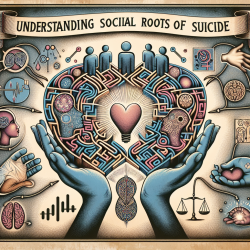Understanding Stuttering as a Spectrum Disorder
Stuttering, a condition affecting over 70 million people worldwide, is often misunderstood and oversimplified. Traditionally, it has been treated as a homogeneous disorder, but recent research suggests a more nuanced understanding. The article "Stuttering as a Spectrum Disorder: A Hypothesis" proposes that stuttering is a spectrum disorder, similar to autism, with varied underlying causes and manifestations. This perspective opens new avenues for personalized therapy, aligning with the principles of precision medicine.
The Complexity of Stuttering
Stuttering is not just a single condition but a spectrum of disorders with diverse etiologies. Individuals who stutter exhibit different phenotypes, diagnostic profiles, and treatment responses. This diversity suggests that stuttering is a heterogeneous condition, and understanding it as such can lead to more effective, personalized treatment approaches.
Genetic and Neurological Insights
Research has identified genetic mutations in pathways related to cellular trafficking and the dopaminergic system as potential contributors to stuttering. Imaging studies have shown varied brain activity patterns among individuals who stutter, further supporting the hypothesis of stuttering as a spectrum disorder. These findings underscore the need for a personalized approach to therapy, considering the unique genetic and neurological profiles of individuals.
Therapeutic Implications
Recognizing stuttering as a spectrum disorder has significant implications for therapy. Traditional speech and cognitive therapies, while beneficial, have shown varied success rates. Understanding the underlying causes of stuttering can help tailor these therapies to individual needs, improving outcomes. Additionally, pharmacological treatments targeting specific neurological pathways may offer new hope for those who do not respond to conventional therapies.
Encouraging Further Research
The hypothesis of stuttering as a spectrum disorder invites further research into its causes and treatment. Practitioners are encouraged to explore this perspective and consider how it might inform their approach to therapy. By embracing the complexity of stuttering, we can develop more effective, individualized treatments that improve the quality of life for those affected.
To read the original research paper, please follow this link: Stuttering as a spectrum disorder: A hypothesis.










